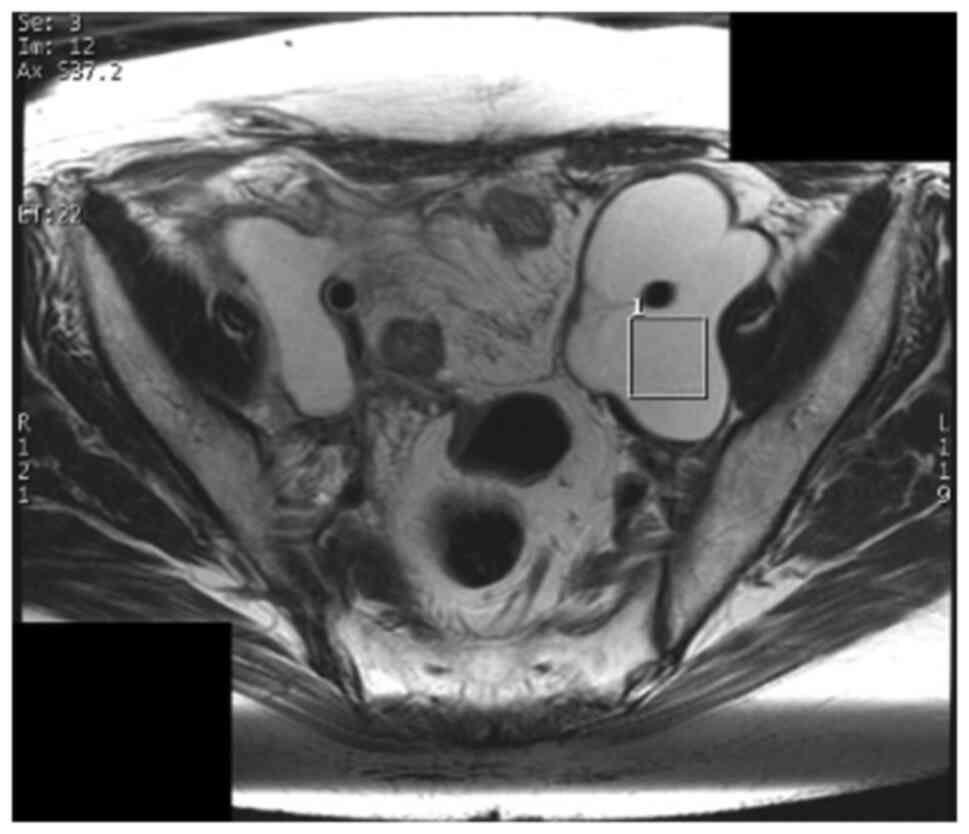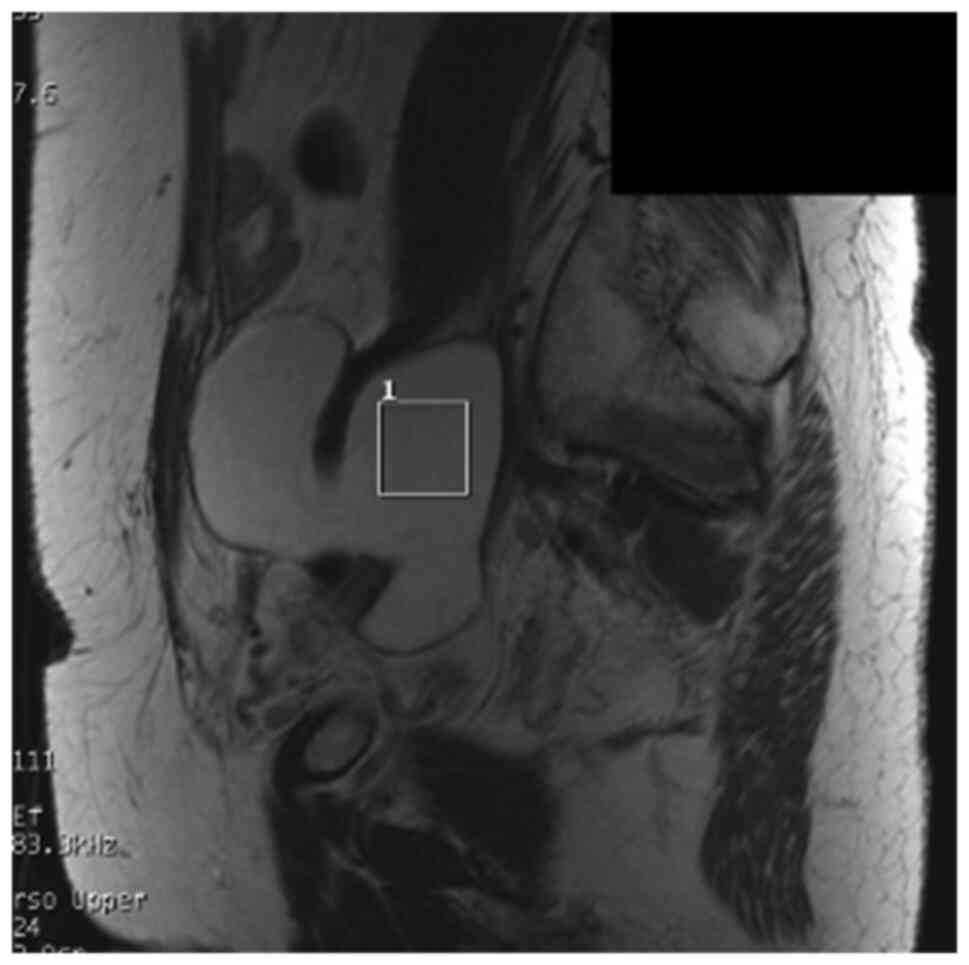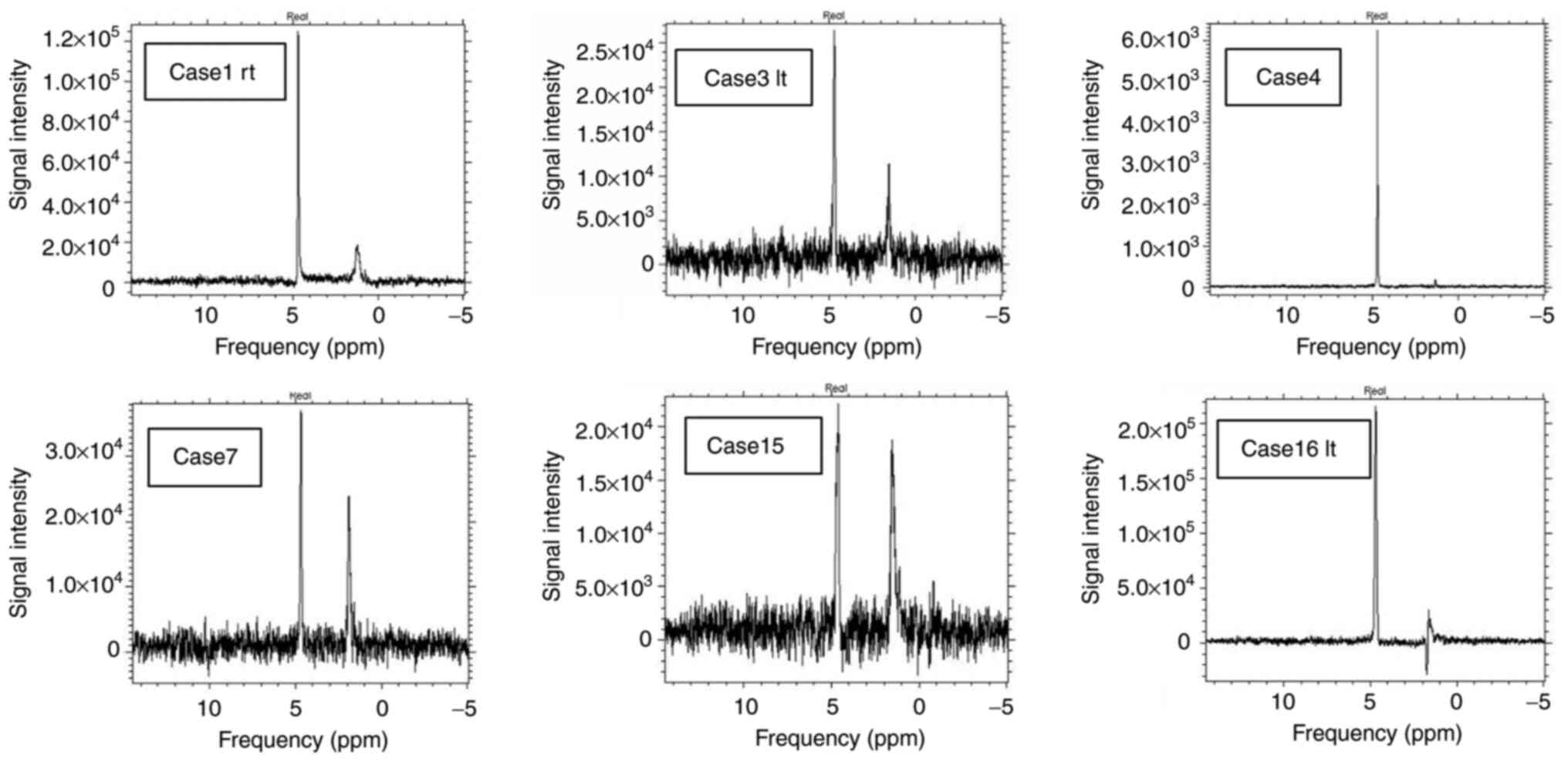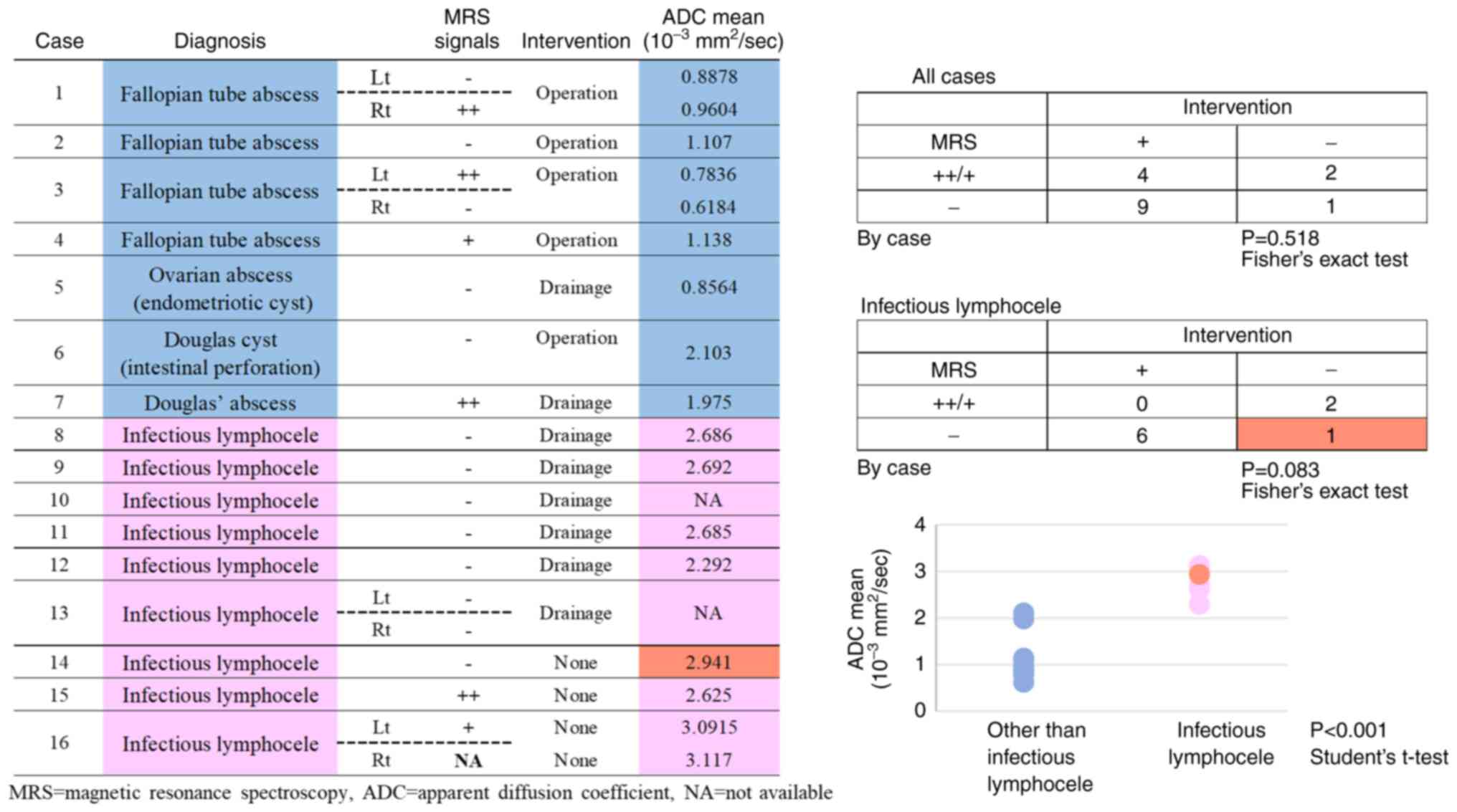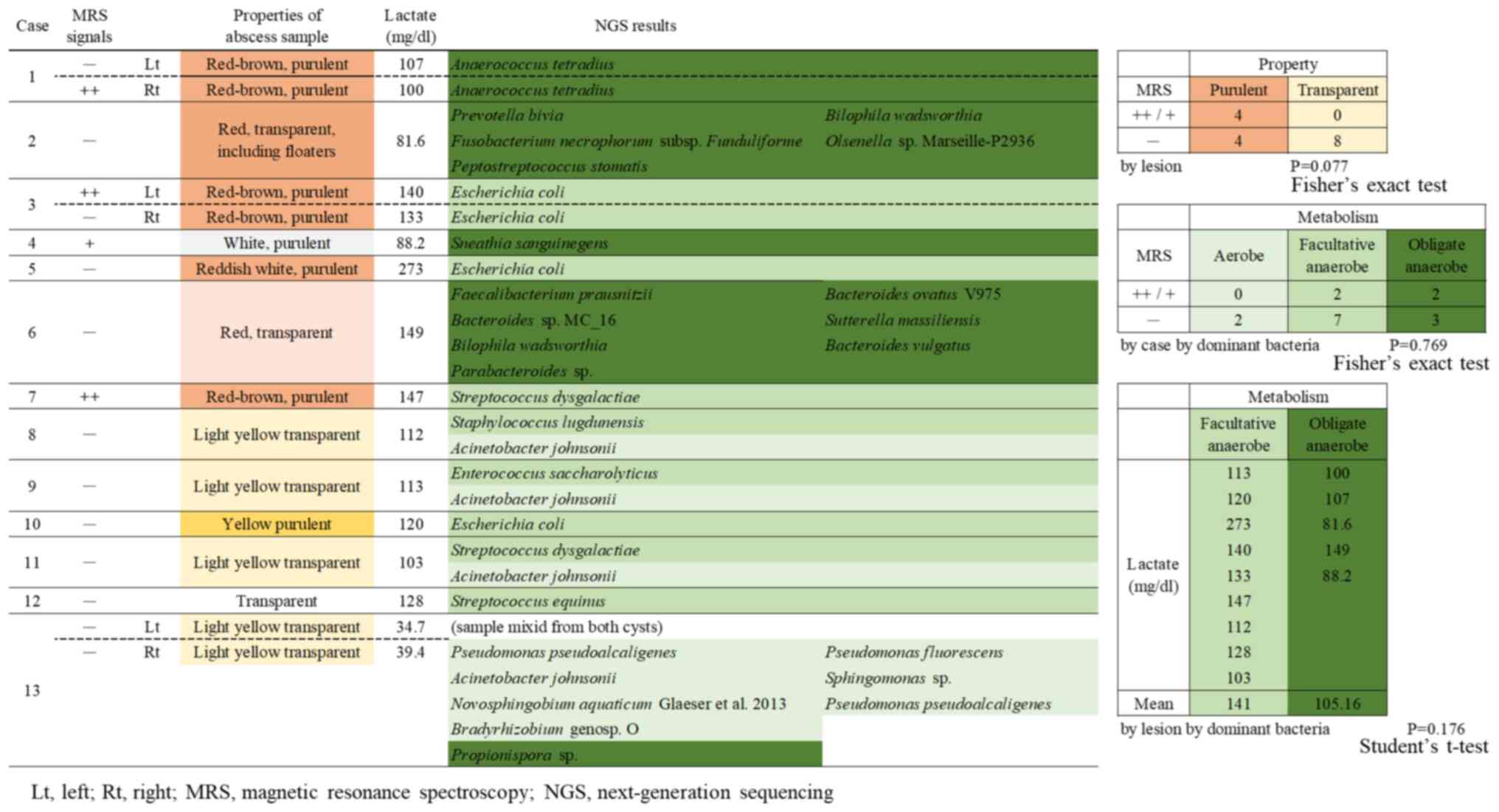|
1
|
Weinberger V, Cibula D and Zikan M:
Lymphocele: Prevalence and management in gynecological
malignancies. Exp Rev Anticancer Ther. 14:307–317. 2014.PubMed/NCBI View Article : Google Scholar
|
|
2
|
Zhang H, Ma L, Wang Q, Zheng X, Wu C and
Xu BN: Role of magnetic resonance spectroscopy for the
differentiation of recurrent glioma from radiation necrosis: A
systematic review and meta-analysis. Eur J Radiol. 83:2181–2189.
2014.PubMed/NCBI View Article : Google Scholar
|
|
3
|
Taylor JS, Langston JW, Reddick WE,
Kingsley PB, Ogg RJ, Pui MH, Kun LE, Jenkins JJ III, Chen G, Ochs
JJ, et al: Clinical value of proton magnetic resonance spectroscopy
for differentiating recurrent or residual brain tumor from delayed
cerebral necrosis. Int J Rad Oncol Biol Phys. 36:1251–1261.
1996.PubMed/NCBI View Article : Google Scholar
|
|
4
|
Anbarloui MR, Ghodsi SM, Khoshnevisan A,
Khadivi M, Abdollahzadeh S, Aoude A, Naderi S, Najafi Z and
Faghih-Jouibari M: Accuracy of magnetic resonance spectroscopy in
distinction between radiation necrosis and recurrence of brain
tumors. Iran J Neurol. 14:29–34. 2015.PubMed/NCBI
|
|
5
|
Guo LY, Feng WY, Guo X, Liu B, Liu G and
Dong J: The advantages of next-generation sequencing technology in
the detection of different sources of abscess. J Infect. 78:75–86.
2019.PubMed/NCBI View Article : Google Scholar
|
|
6
|
Song YG, Shim SG, Kim KM, Lee DH, Kim DS,
Choi SH, Song JY, Kang HL, Baik SC, Lee WK, et al: Profiling of the
bacteria responsible for pyogenic liver abscess by 16S rRNA gene
pyrosequencing. J Microbiol. 52:504–509. 2014.PubMed/NCBI View Article : Google Scholar
|
|
7
|
Okada T, Harada M, Matsuzaki K, Nishitani
H and Aono T: Evaluation of female intrapelvic tumors by clinical
proton MR spectroscopy. J Magn Reson Imaging. 13:912–917.
2001.PubMed/NCBI View Article : Google Scholar
|
|
8
|
Nadatani Y, Watanabe T, Suda W, Nakata A,
Matsumoto Y, Kosaka S, Higashimori A, Otani K, Hosomi S, Tanaka F,
et al: Gastric acid inhibitor aggravates indomethacin-induced small
intestinal injury via reducing Lactobacillus johnsonii. Sci Rep.
9(17490)2019.PubMed/NCBI View Article : Google Scholar
|
|
9
|
Kakiuchi T, Yamamoto K, Imamura I,
Hashiguchi K, Kawakubo H, Yamaguchi D, Fujioka Y and Okuda M: Gut
microbiota changes related to Helicobacter pylori
eradication with vonoprazan containing triple therapy among
adolescents: A prospective multicenter study. Sci Rep.
11(755)2021.PubMed/NCBI View Article : Google Scholar
|
|
10
|
Burn PR, Haider MA, Alfuhaid T, Brown MP
and Roberts TP: Proton magnetic resonance spectroscopy as a
potential tool for differentiating between abdominal fluid
collections. J Magn Reson Imaging. 18:740–744. 2003.PubMed/NCBI View Article : Google Scholar
|
|
11
|
Takeuchi M, Matsuzaki K and Harada M: In
vivo proton MR spectroscopy in uterine abscesses. J Magn Reson
Imaging. 38:955–957. 2013.PubMed/NCBI View Article : Google Scholar
|
|
12
|
Pal D, Bhattacharyya A, Husain M, Prasad
KN, Pandey CM and Gupta RK: In vivo proton MR spectroscopy
evaluation of pyogenic brain abscesses: A report of 194 cases. AJNR
Am J Neuroradiol. 31:360–366. 2010.PubMed/NCBI View Article : Google Scholar
|
|
13
|
Macfarlane S and Macfarlane GT: Regulation
of short-chain fatty acid production. Proc Nutr Soc. 62:67–72.
2003.PubMed/NCBI View Article : Google Scholar
|
|
14
|
Watabe J: Carbohydrate fermentation in the
colon. J Intestinal Microbiol. 19:169–177. 2005.
|
|
15
|
Tanaka K, Tominaga E, Nogami Y, Nakamura
M, Nishio H, Yamagami W, et al: Therapeutic procedures for
postoperative infectious lymphocele. Tokyo J Obstet Gynecol.
64:571–575. 2015.
|
|
16
|
Mansour SM, Gomma MMM and Shafik PN:
Proton MR spectroscopy and the detection of malignancy in ovarian
masses. Br J Radiol. 92(20190134)2019.PubMed/NCBI View Article : Google Scholar
|
|
17
|
Dolciami M, Canese R, Testa C, Pernazza A,
Santangelo G, Palaia I, Rocca CD, Catalano C and Manganaro L: The
contribution of the 1H-MRS lipid signal to cervical
cancer prognosis: A preliminary study. Eur Radiol Exp.
6(47)2022.PubMed/NCBI View Article : Google Scholar
|















